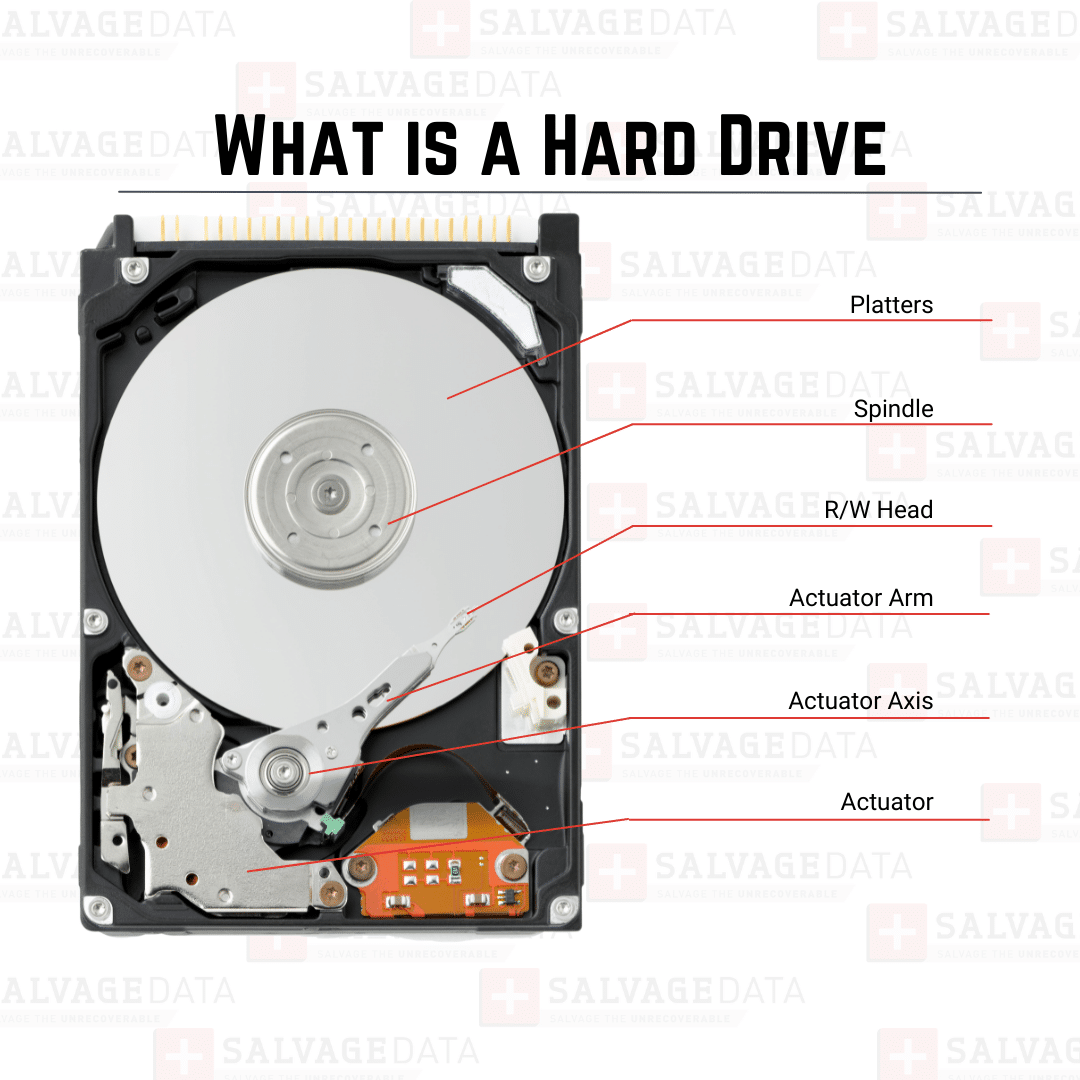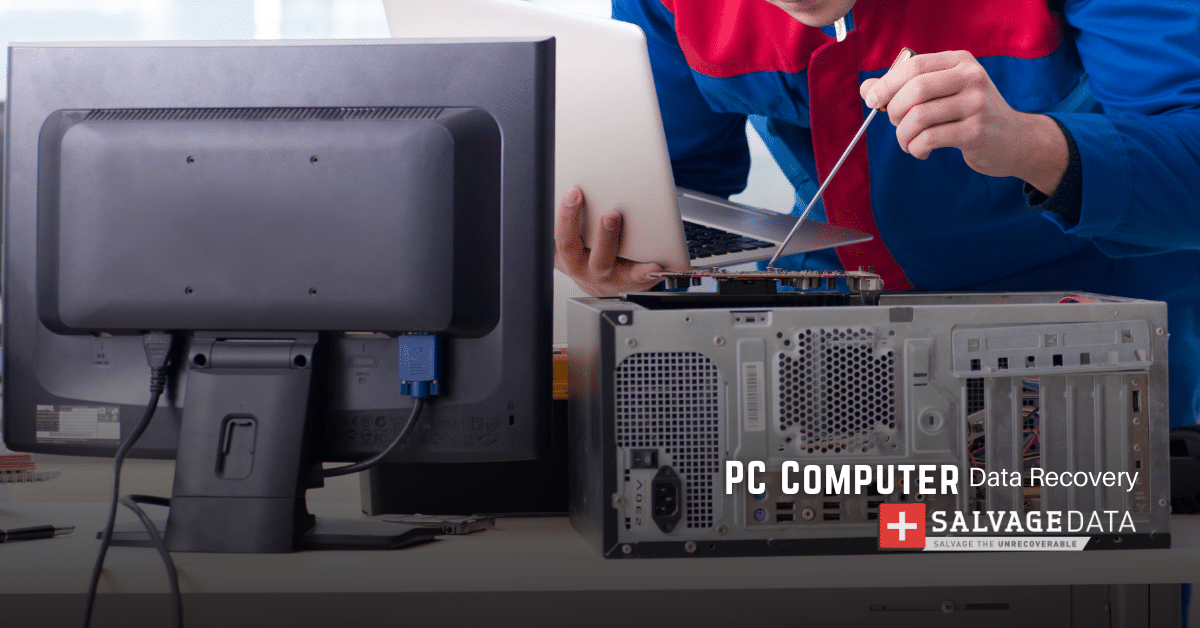Recent Articles
How To Recover Overwritten Files
The Snowflake Data Breach: A Comprehensive Overview
Mac Not Recognizing External Hard Drive: Quick Fix Solutions
How Multi-Cloud Backup Solutions Can Prevent Data Disasters
Capibara Ransomware: What is it & How to Remove
What Should a Company Do After a Data Breach: The Ticketmaster Incident
Secles Ransomware: Removal Guide
What To Do When Your Chromebook Freezes
How to Create Hyper-V Backup
What Is The Best Data Recovery Software For PC

I think there's an issue with my storage device, but I'm not sure Start a free evaluation →
I need help getting my data back right now Call now (800) 972-3282
Hard drives are still one of the main data storage solutions. Although SSDs are in most devices as the main storage option, several users add hard drives to their computers and laptops as secondary drive, since hard drives are cheaper than SSDs.
However, there are many types of hard drives with different specifications for different uses. They can be conventional spinning hard disk drives (HDD) or Serial Advanced Technology Attachment, the SATA hard drive, for example.
Modern SATA hard drives have a range capacity from 500GB to 16GB. This data storage technology has quality transmission speeds, high data storage capacities, and compatibility with almost all configurations and manufacturers.
Besides desktop computers and laptops, you can find SATA hard drives, also known as Serial ATA interfaces on servers and gaming consoles, such as PlayStation 3 and 4, and Xbox 360 and One.
You can always check your hard drive type to see its compatibility with software, hardware, apps, and games.

What is in a SATA hard drive
Able to write to the disk with an interface rate of 6 Gb/s with a throughput of 600 MB/s, Serial ATA storage drives are characterized by high transmission speeds, massive storage capacities, and support for most operating systems in use today. They also excel in their compact size, being classified as 2.5” drives, contrary to those used in desktops (which are normally 3.5”).
Unlike PATA devices, which deliver bits of data simultaneously over a 40-pin ribbon cable, a Serial ATA drive relies on a single cable with a minimum of four wires that create point-to-point connections between devices and transmit data serially, one bit at a time. It comprises an electrical port to power a drive in a computer by utilizing the host device’s power supply.
The data port carries information between the drive and motherboard, with a jumper being used to configure different drive operation modes. It offers a lower risk of crosstalk and electromagnetic interference because of a smaller number of conductors.
The data port carries information between the drive and motherboard, with a jumper being used to configure different drive operation modes. The SATA interface connects to the storage drive and the motherboard on a PC, notebook, laptop, or gaming system.
SATA hard drives vs SATA SSDs
An HDD, hard disk drive, is the original hard drive that resembles a vinyl record player with a spinning disc and a fragile read/write arm hovering over its surface. These drives are large, bulky, and susceptible to a variety of problems, including disk fragmentation. This issue occurs when the disc is crowded with not sequentially written data on the drive.
Meanwhile, SSDs (solid-state drives) use flash memory, with no moving parts. They perform the same functions as HDD, but faster.
SATA hard drives are modern drives, faster, and with a longer lifespan.
Storage capacity
Storage volumes are an advantage of SATA HDDs. With a minimum of 500 GB hard drive capacity for laptops. Desktop computer models can range from 250 TB to 14 TB.
Even though the boot time is a little slower, a serial ATA device will provide a much faster transfer speed between the drive and the motherboard than other types of hard drives and cost less per GB than SSDs.
SATA SSDs have faster boot times than SATA hard drives. SSDs can boot up a computer in as little as 10 seconds, while SATA hard drives can take up to a minute or more.
Speed
SSDs store all the data on non-volatile flash memory, which makes them faster than SATA drives. Even the most modern and fastest SATA hard drive will lose to SSDs when considering only the read/write speed.
Data transfer method
SATA SSDs and SATA hard drives use the same data transfer method, which is serial data transmission. However, SSDs use flash memory to store data, while hard drives use spinning disks.
Reliability
SATA drive can last reliably well beyond 5 years, the same as other types of HDD. If you require a lot of cheap storage and don’t need high reads or writes, then SATA hard drives are your best bet.
SSDs, though, have no moving parts in their physical makeup. As chip-based drives, they are also much more durable, with a lifespan of around ten years.
The downside is that SSD drives don’t come in as many sizes, and are much more expensive. They range from 120 GB to 2 TB and cost about 2-4 times more than a SATA hard drive of the same size.
Can SATA hard drives fail
Yes, a SATA hard drive failure can occur unexpectedly. It is important to note that hard disk failure can be catastrophic or gradual, and there are two main types of hard drive failure: physical and logical. Physical failures are often due to a failure of the electric motor or the drive itself, while logical failures can be caused by issues such as firmware corruption or human error.
Here is a list of the most common reasons for SATA HDDs to fail:
- Logical issues
- Partition damage
- Accidental data deletion
- Human errors
- Virus attacks or malware infection
- Other malfunctions that mechanical hard drives are prone to, such as physical contact or damage, heat, humidity, dust, power surges, or even time.
If you’ve found your SATA device in trouble, contact SalvageData’s 24/7 data recovery service near you, or leave an online request for a free in-lab consultation. Having dealt with many drive failures and malfunctions for over fifteen years, our experts can identify the problem quickly and offer you the best approach to recover your SATA drive data.












